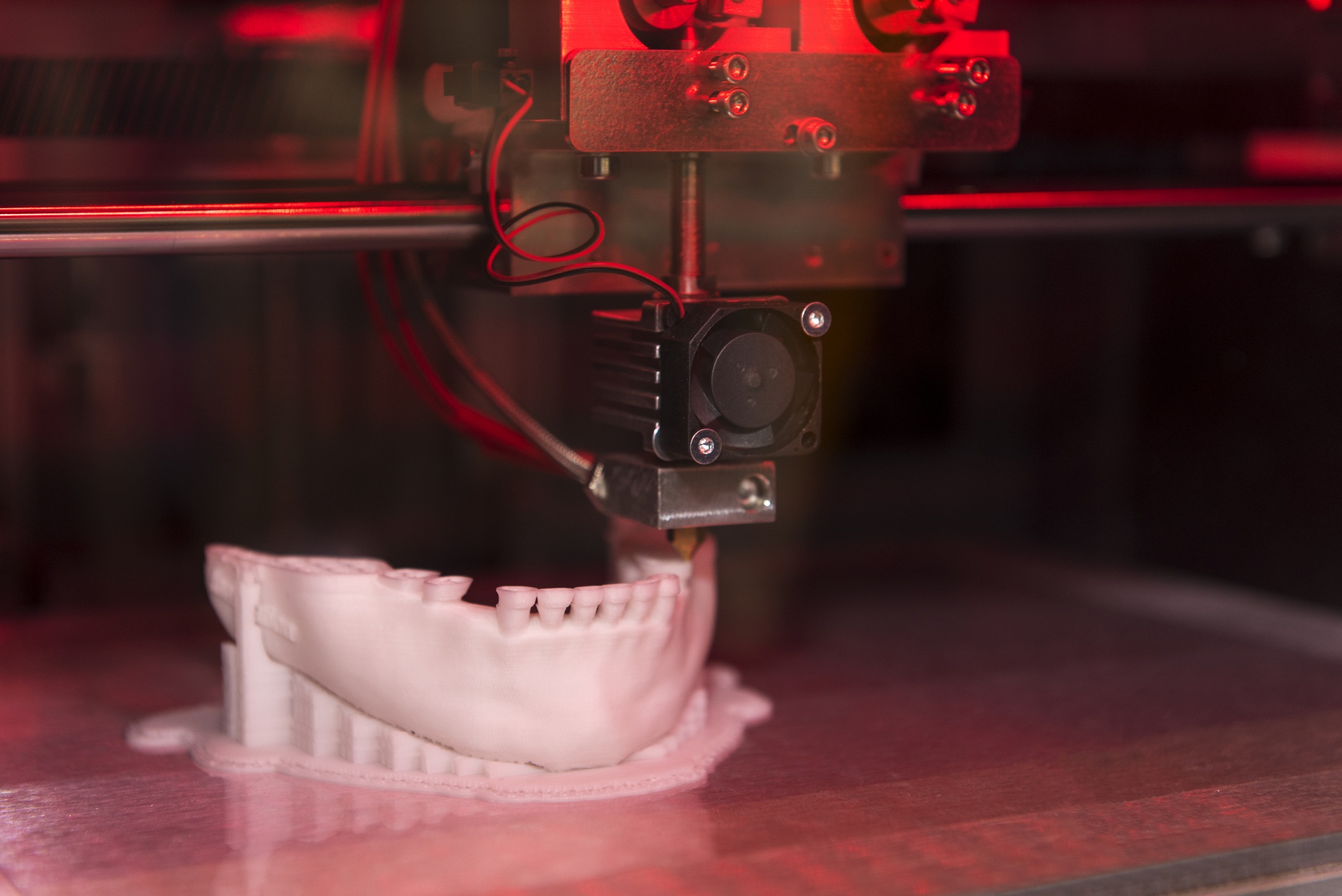
The 3D printing industry is growing at a very fast pace, with the potential to impact many markets, including healthcare. From biostructures comprised of cells to assistive devices and surgical tools, 3D printing has a plethora of uses and is only just starting to leave its mark in medicine. In this article, we have compiled some of the top stories and research in recent news surrounding 3D printing in the medical industry to give you an idea of how this exciting technology could improve healthcare this year.
Using Living Cells in a 3D Printer to Bioprint Tissue Structures
A high-resolution 3D printing technique that uses a novel bioink to embed cells in a 3D matrix is currently being developed at TU Wien in Vienna, Austria. This technique is extremely precise and prints at the speed of one meter per second, achieving unprecedented efficiency. This work was published in the journal Advanced Healthcare Materials.
Embedding cells into uniquely designed 3D frameworks allows for the controlled investigation of tissue growth and cell behavior. Bioprinting these models can be challenging due to a lack of precision and short time frames in which the cells can be manipulated without being damaged. The materials used in this process must be compatible with the living cells as well, limiting the number of bioprinting materials that can be used.
Bioprinting: Living cells in a 3D printer. With a new process developed at TU Wien (Vienna), living cells can be integrated into fine structures created in a 3D printer – extremely fast and with very high resolution. https://t.co/UrRTXLbVsB pic.twitter.com/qLhlWo7hz5
— PIER MARIA FORNASARI (@PierFornasari) October 22, 2019
GE Healthcare Partners with Formlabs to Help Doctors 3D Print Patient-Specific Anatomical Models
GE Healthcare has announced a collaboration with the 3D printer provider Formlabs that will aim to make it easier for physicians to 3D print anatomy models for patients. These models are not a ‘one-size-fits-all’, but will rather be a unique, patient-specific model that is generated from imaging data. These customized models will allow the physician to show the patient a 3D representation of their own body and what potentially needs medical attention.
New Research Brings Science One Step Closer to 3D Printing Ovaries for Transplants
Researchers have identified and pinpointed the location of structural proteins within a swine ovary, an important step in the 3D printing of an artificial ovary for human implantation. These findings will contribute to the continuing development of an ink that will contain these proteins and be used in the process of creating an ovary via 3D printing, or additive manufacturing. The findings of these researchers’ work were published in the journal Scientific Reports.
3D Systems Partners with CollPlant to 3D BioPrint Tissues
3D Systems, a leading company in 3D printing technologies, has partnered with the Israeli bioprinting firm CollPlant to generate artificial tissues and scaffolds. This collaboration will allow the two to combine their technologies in the 3D printing space, specifically the physical printers from 3D Systems and CollPlant’s proprietary recombinant human collagen (rhCollagen), which is a bioink used to 3D print organic tissues.
3D Systems and CollPlant to provide solutions for bioprinting tissues and scaffolds https://t.co/1BDoPTvtMn pic.twitter.com/dZLO2wkRwG
— Mitchell and Son Web Design | 3D Printing Service (@MitchellandSon1) January 13, 2020
New Gold Nanoparticle 3D Printing Technique Has Implications in the Pharmaceutical Industry
Alongside colleagues from the University of Nottingham, a team of researchers from the University of Seville has recently used 3D printing to make a nanoparticle image of stabilized gold with biocompatible systems. This could have strong implications in the pharmaceutical industry, allowing for the creation of gold biosensors that have been shown to be useful in detecting cancer cells and biomarkers. The image 3D printed with gold in this research was the University of Seville’s logo. The study was published in Scientific Reports, a Nature journal.







 © 2025 Mashup Media, LLC, a Formedics Property. All Rights Reserved.
© 2025 Mashup Media, LLC, a Formedics Property. All Rights Reserved.